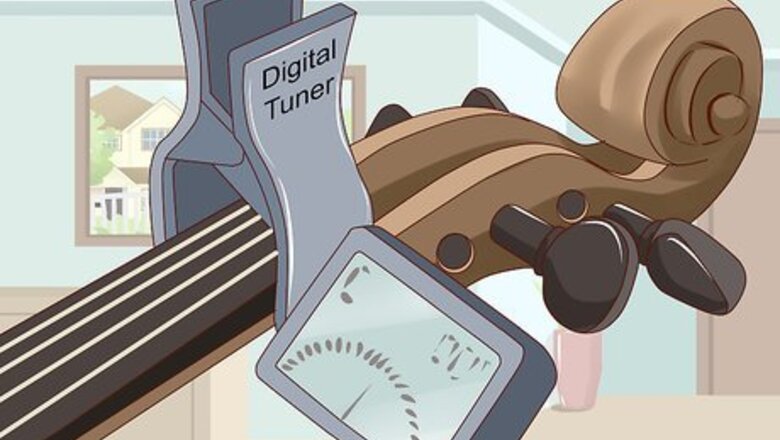
views
Setting up a Digital Tuner
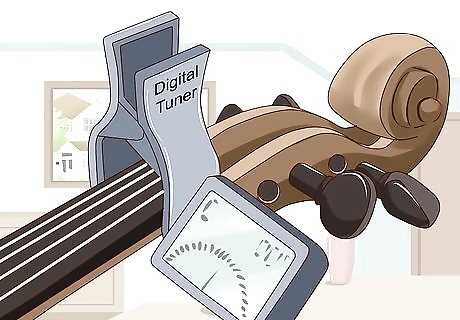
Set the digital tuner where you can see it. Purchase a digital tuner online or from the music store. Before you begin tuning your cello, lay the tuner so you can see the screen. A music stand works well, if you have one on hand. Digital tuners are the best option for new cello players. Since the tuner tells you how to adjust the strings, you do not need to know how each string should sound. Some newer tuners clip directly onto the cello. Place it above the tuning pegs rather than on the strings.
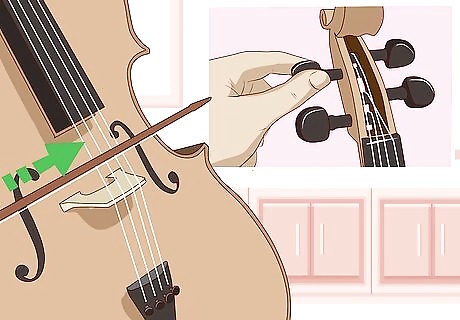
Play the strings to hear how they sound. Tune the strings one at a time. Start on the left side and play the first string with your bow. For the best results, play the open part of the string between the fingerboard and bridge. You can pluck the strings to play them. However, using a bow leads to more precise tuning.

Watch the tuner’s display to adjust the strings. When you play a string, the tuner’s meter will move and display the note’s pitch. The meter line needs to stop in the center, displaying the proper note for each string you play. C-G-D-A is standard tuning for cellos. However, some pieces of music require a different tuning scheme. Use the tuner the same way, but tune the strings to different notes.
Adjusting the Cello’s Strings

Play the C string and listen. Hold the cello so the strings are facing you. The C string is the thickest string and is on the cello’s left side. Play the string like you normally would, bowing the string below the fingerboard. Avoid holding the string against the fingerboard. While tuning a cello, always play the open strings. This means you should never hold the string against the fingerboard. Once you feel comfortable tuning your cello, you can start with the smaller strings. Hold the cello normally with the strings facing away from you.
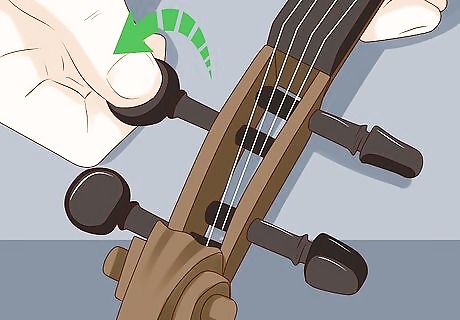
Turn the tuning peg clockwise to tighten the string. The tuning pegs are located at the top end of the cello and control the instrument’s pitch. Tightening the string raises the pitch. To avoid breaking the string, turn the peg very gently. When you’re finished, push the peg inwards to stick it in place. The lowest peg, which is on the cello’s left side, adjusts the C string.
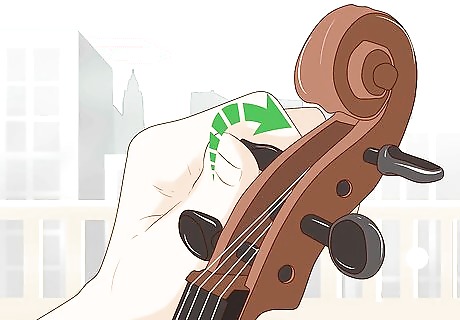
Twist the tuning peg counterclockwise to loosen the string. Sometimes you will need to loosen the string to get it in tune. Simply turn the peg in the opposite direction as usual. Turn the peg slowly to make small adjustments to the cello’s pitch. Be sure to push the peg in to secure it in place. When the string is loosened enough, it should sound perfect when you play it. If it gets too loose, the cello’s bridge can fall out of place.
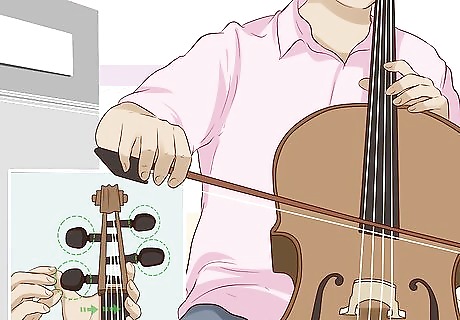
Tune the other strings from left to right. The G string is next to the C string. The D and A strings follow it. They increase in pitch from left to right. Tune these in order by using your tuning equipment and turning the pegs as needed. The G string’s tuning peg is on the left side, above the C peg. The D peg is across from the G peg. The A peg is underneath the D peg. If you are confused about which peg to use, follow the strings. Each string wraps around 1 peg used to adjust it.
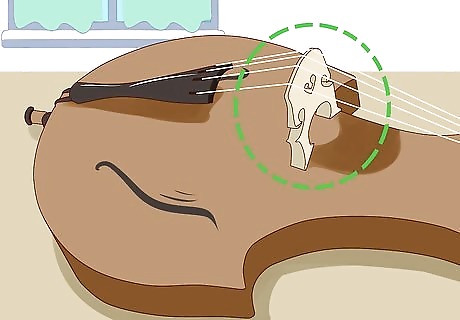
Check that the bridge is secure in the cello. The bridge is the small white piece in the middle of the cello. It holds the strings up to produce sound but, since it is held in place by string tension, can come loose during tuning. Make sure it fits straight across the cello with the highest part underneath the C string. If the bridge comes loose, you may have to loosen the strings to fit it into place. Slide it into place, then tighten the strings again.
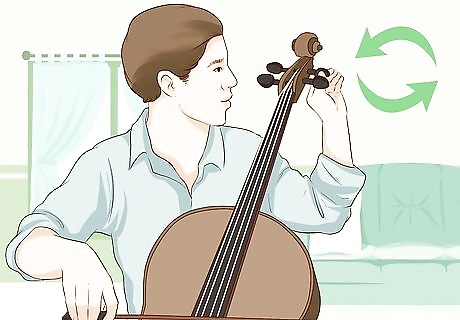
Repeat tuning for all the strings. As you tune the higher strings, the lower ones tend to go out of tune again. Go back to the C string, test it, and adjust the peg again. Then repeat this for the other strings from left to right. The adjustments you need to make will be way less than the first time. Be gentle when turning the pegs.
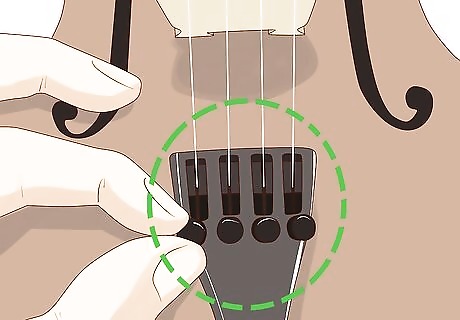
Use the fine tuners at the cello’s bottom to finish tuning. Locate the tuners at the bottom of the strings. Each tuner connects to 1 string. Play the open strings, listen to them, then adjust the tuners. Turn them to the right to tighten the string and to the left to loosen it. Utilize the fine tuners instead of the pegs whenever you can. They make smaller adjustments. Not all cellos have fine tuners. Beginner cellos may only have tuning pegs.
Using Other Tuning Tools
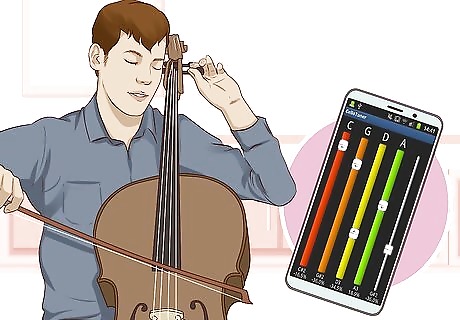
Tune the cello with a sound application. Search for cello tuner apps in the Play Store on your phone. Alternatively, search for them online. Quite a few apps and sites are available, and you can press on the different options to tune your cello to whatever tuning scheme you need. These apps work like digital tuners. Simply play the open string, watch the app, then make adjustments. For example, gStrings is a tuning app that works with any musical instrument.
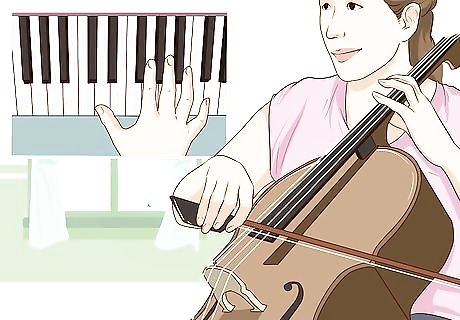
Tune the strings to a piano’s sound if you don’t have an app. You don’t need to know how to play a piano, but you do need to know how to locate middle C. Play the cello’s strings, then play the notes on the piano you want to tune the strings to. Use the cello’s fine tuners and pegs to match the sounds. Middle C is next to the set of 5 black keys closest to the center of your piano or keyboard. It’s the first white key to the left of these keys. The piano key for the C string is 12 white keys to the left of middle C. Move 4 white keys back to the right before tuning each string after that.
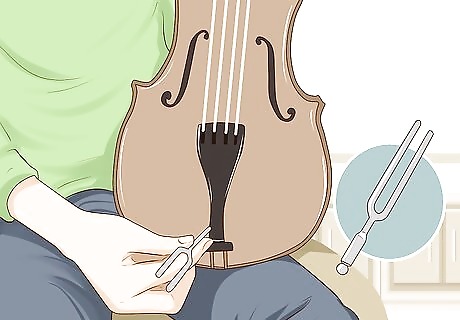
Use a tuning fork or pitch pipe for handheld sound tuning. Tuning with these instruments is similar to using a piano. You can find them at many music stores. You will need to sound each note and then adjust your cello’s strings to match it. Tuning forks in particular require some music knowledge, so avoid using one until you’re comfortable playing your cello. For a pitch pipe, blow into the pipes to hear the sounds. They will be labeled with the corresponding notes. Unlike pipes, forks are tuned to a single note. Get an A-440 fork, which corresponds to your A string. Use it to adjust all of the other strings as well.




















Comments
0 comment